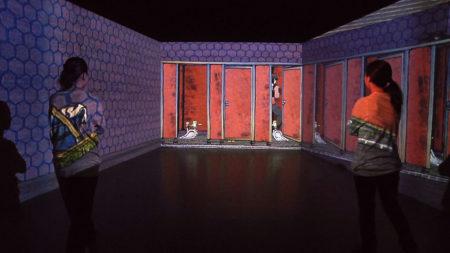Continue playing
(Time remaining: )
Play from beginning
Continue playing "{{ controller.videos[controller.getVideo(controller.currentVideo)].segmentParentTitle}}"
{{controller.videos[controller.getVideo(controller.currentVideo)].title}} has ended.
Lynda Benglis in "Boundaries"Preview
In this preview from the Art in the Twenty-First Century Season 6 episode, Boundaries, artist Lynda Benglis, looking at her phosphorescent installation, Phantom (1971), discusses how interpretation of form might alter the perception of an object.
Closed captionsAvailable in English, German, Romanian, Italian, Japanese, Korean, Chinese, Italian
Through the Art21 Translation Project, multilingual audiences from around the globe can contribute translations, making Art21 films more accessible worldwide.
Interested in showing this film in an exhibition or public screening? To license this video please visit Licensing & Reproduction.
Preview
Preview

